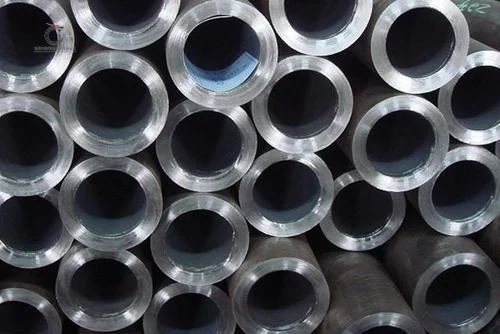Enter the world of high frequency welded pipe
The straight seam high frequency welded steel pipe has the characteristics of relatively simple process and fast continuous production. It has a wide range of uses in civil construction, petrochemical, light industry and other fields. It is mainly used to transport low-pressure fluids or manufacture components and light industrial products for various projects.
High-frequency welding is a kind of induction welding (or pressure contact welding). It does not require welding seam fillers, no welding spatter, narrow welding heat affected zone, beautiful welding shape and good welding mechanical properties. It is widely used in steel pipe production.
In welding, equipment is used to convert low power into high frequency power to complete the melting and welding process of solid metal. In high-frequency welding, resistance and heating of pressure rolls and tube blanks. Therefore, in order to ensure welding efficiency, it is necessary to control the interaction of the coil, impedance and rolling mill to optimize the welding process and ensure that the power consumption during the welding process is within a reasonable range. This is the problem that must be paid attention to in high-frequency welding technology.

Analysis of the principle of high frequency welding
The so-called high frequency in high frequency welding refers to the current with a frequency of 50KHz-400KHz. This current will have two effects on the metal. One is the skin effect: unevenness occurs when high-frequency current passes through the conductor. And the density of the conductor surface is large but the inside is small, this is the skin effect; one is the proximity effect, high-frequency current flows in the opposite direction between adjacent conductors, even if the other side is short, the current will be concentrated to the edge. Will flow to the shorter side, producing a proximity effect. These two effects are the basis of high frequency welding. High-frequency welding uses the skin effect to concentrate the high-frequency current on the working surface, and uses the proximity effect to control the loop position and range of the high-frequency current, so that the adjacent steel plates are heated and melted to complete the welding.
What is the difference in appearance between high frequency welded pipe and welded pipe
High-frequency welded pipe (ERW steel pipe)belongs to a kind of welded steel pipe. Therefore, high-frequency welded pipe and welded steel pipe are different overall, but the main categories are the same.
There are four types of high-frequency welded pipes:
1. Welded steel pipes used for low pressure fluid delivery are also called ordinary welded pipes, usually called clarinets.
2. Galvanized welded steel pipe used for low pressure fluid transportation is also called galvanized welded steel pipe, commonly known as white pipe
3. Ordinary carbon steel wire casing is a steel pipe used to protect wires in electrical installation projects such as industry, civil construction, and mechanical equipment installation.
4. Straight seam electric welded steel pipe refers to a steel pipe whose weld seam is parallel to the longitudinal direction of the steel pipe.
Steel pipes are usually divided into two categories, one is welded steel pipe and the other is seamless steel pipe. Welded steel pipes are also called welded pipes. They are steel pipes made of steel or strip steel after crimping. Welded pipe is divided into: straight seam welded pipe and spiral welded pipe
Materials are divided into: galvanized welded steel pipe, stainless steel welded steel pipe, of course! The surface quality and dimensional tolerances of welded pipes produced by different materials and processes are different.
High-frequency welding technology uses the change of current frequency to produce skin effect and proximity effect on metal, thereby causing the metal to melt and complete the welding. Therefore, controlling its current is the most important technical parameter. The above analysis is high frequency welded pipe. The main technical parameters that need to be controlled in this process and their technical characteristics indicate that to reduce energy consumption, impedance, frequency and induction coils must be fully adjusted. Used to ensure welding quality.






